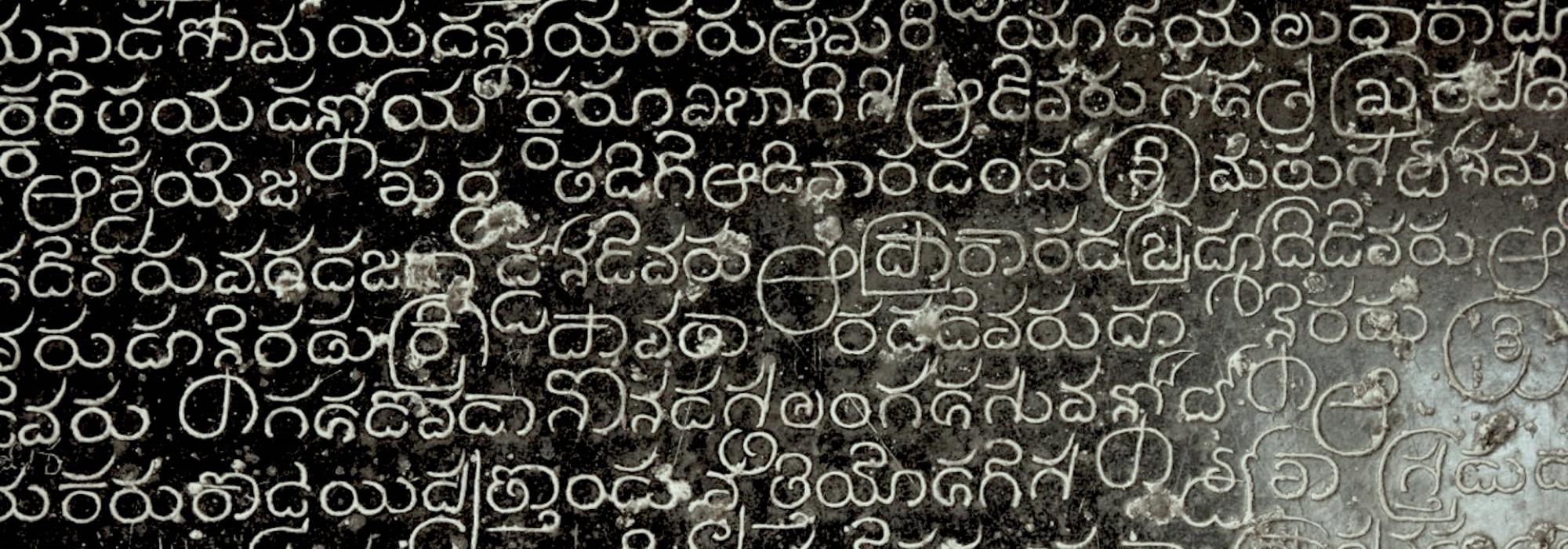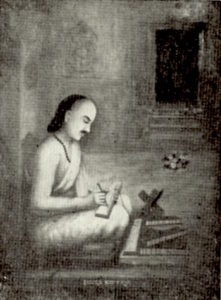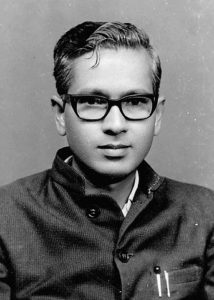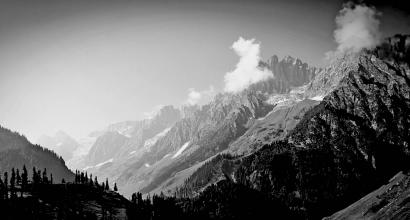Critics of Indian—particularly Kannada—literature find monotony and boredom in the rhythm of classical poetic meters[1] of Kannada and Sanskrit. They accuse our poets of the yesteryear for neither having the capacity nor showing the intent to break away from this so-called boredom.
But in reality, many of our poets—however limited be their poetic imagination—have consistently maintained great variety in metrical rhythms. Their individual styles and approach may be different but most of them manage meters effortlessly. For example, there’s not much of a difference in the abilities of Pampa and Ranna while managing Kanda-vṛttas[2] as compared to those of Rudrabhaṭṭa and Nemicandra. Similarly, the capacity of a unique category of poets like Nayasena, Āṇḍayya, Brahmaśiva, and Vṛttavilāsa (who use more Kannada samāsas[3] than Sanskrit ones) when compared to a differently unique category of poets like Durgasiṃha, Candrarāja, Ṣaḍakṣari, and Kavikāma would not differ much. We can offer a similar examples for campū[4] poets as for ṣaṭpadi[5] poets, like Lakṣmīśa, Kumāravyāsa, Virūpākṣa-paṇḍita, Cāmarasa, Narahari, Cāṭuvitala (Nityātma Śukayogi), and Rāghavāṅka.
The world of sāṅgatya[6] fares similarly. What we need to observe here is that managing metrical rhythm is totally different from padya-śilpa (poem construction). The word ‘padyaśilpa’ is commonly used in Telugu. But in Kannada, perhaps the only scholar who has used the word frequently and cogently is Dr T. V. Venkatachalashastri. Padya-śilpa is not merely the capacity to manage prosody or metrical rhythm.
According to the poetry-prosody aestheticians of Andhra, padya-śilpa includes usage of language, putting together samāsas, usage of sounds and letters, prāsa (alliteration), the manner in which the smooth flow of lines is achieved; intricate composition, etc. Managing aesthetics can also be added to this. All the poetic talent, imagination, and variety shown by a poet from the beginning to the end will be part of padya-śilpa. For instance, Pampa typically starts his poems either with easy pronouns or words that suit smooth prāsa and then jumps all the yatis (metrical pauses, caesurae), and in the final line, he ends with a beautiful, memorable, and appropriate samāsa or two. In this samāsa, we see a bunch of letters in similar tones and rhymes too.
This is a general analysis. But the skill of managing prosody is not spread so wide. It is just the normal flow of the rhythm of the chandas; merely the unimpeded stream of vṛtta-kanda-ṣaṭpadi. Between these two boundaries, we can position chandaśśilpa (metrical construction). This is also a word given by the Andhra people. Again, it is Dr. T. V. Venkatachalashastri who has brought it to the forefront in Kannada.
The use of the word śilpa in padya-śilpa or chandaśśilpa causes confusion to many; there are others who think that such a usage is inappropriate. In fact, the word śilpa, which has originated from the root word śil is mostly used for sculptures made out of stone. The word śaila (mountain) is related to śila (stone) and not to śilpa (sculpture). The word śila has other meanings like – behaviour, system, investigation, collection, artistic; and in our culture, we have other meanings too: science, technicality, skill, erudition, etc. Kāvya-śilpa, Padya-śilpa, Chandaśśilpa – all these words suggest the poet’s intentional but appropriate experiments in using in his compositions unique word-patterns based on his talent, erudition, and practice; nothing else.
It is inappropriate, however, to use the word śilpa merely to denote ‘structure,’ as it is happening these days. Śilpa has many internal dimensions. But the word ‘structure’ is not so. Therefore, for structure, it is appropriate to use the Kannada word ಕಟ್ಟೋಣ (kaTToNa) or ಕಟ್ಟಡ (kaTTaDa), or the Sanskrit words ‘bāhyaśilpa’ or ‘rūpaśilpa.’ In sum, without deep analysis, one shouldn’t jump to conclusions that the works of all our older poets were monotonous or mechanical with respect to the usage of poetic meters.
There is a general usage of the word ‘chandogati’ (metrical rhythm) to mean ‘padyagati’ (poetical rhythm). In padyagati, there are two aspects – chandaḥpadagati (word rhythm of meter) and bhāṣāpadagati (word rhythm of language). When these two rhythms become same in their structure, then the poetical rhythm becomes monotonous and composing such poems will become difficult. Au contraire, when these two rhythms are at opposite poles, there will be problems with pauses of recitation and the beauty in sound, resulting in the obstruction of poetic rhythm. Problems arising from these two extremes are not seen in most of our yesteryear poets. The reasons for this include their awareness of the beauty of metrical rhythm and style as well as the uniqueness of every meter, along with their constant preparation to achieve the same.
During the making of a poet—i.e. while preparing himself—he gives high priority to metrical rhythm, knowing its importance in achieving word rhythm in meter and he uses words that fit the rhythm of the meter naturally. Hence, the monotony or boredom in rhythm arises at that stage. Moreover the difficulty in this calculated composition reduces the quality of the verse and poet feels extremely uneasy. Those so-called poets, who fail at this early phase of learning how to compose poetry set to meters, give up metrical versification. And they do not stop at that; they start blaming poetic meters and prosody, accusing it to be difficult, unnatural, the way of fools, or a means of stepping backwards.
Without respecting chandaḥpadagati (and the system of gaṇas) and without understanding the importance of pauses in recitation, if one tries to just meet the mathematical constraints (i.e. the laghu-guru[7] pattern) of the meters, they may succeed in achieving bhāṣāpadagati but they will fail miserably in achieving chandaḥpadagati and thereby disturbing padyagati, beauty of tune, and style of the meter. This is the fate of those who do not practice or equip themselves with vocabulary and imagination.
Once, the Late P. Lankesh, while writing about the importance of prosody in his newspaper, had given three bhāmini-ṣaṭpadis[8] for reference and to help young learners. But there were many mistakes in them. These are, however, problems that are seen in the early stages of one’s composition. Merely based on this, we should not conclude that composing in meter is difficult. If we recite at least a hundred poems each for each type of vṛtta-kanda-ṣaṭpadi of our earlier poets, with clear pronunciation and in the rhythm unique to every meter, we can easily grasp the science or technique of composing them. Especially the Navodaya[9] style of poetry of the early 20th century has used simple, rhythm-based mātrā-jāti alone. To understand the Navodaya style of metrical versification and the ṣaṭpadi-caupadi group of meters[10] as well as to compose in them, we primarily need to have a sense of rhythm. If we are aware of ādi-rūpaka-khaṇḍacāpu-miśracāpu tāḻas[11], that will be an added advantage; it will be especially helpful in understanding the Trimūrtigaṇa meters.
However, it needs keen observation to understand the rhythm of Varṇavṛtta meters, particularly some of those that don’t have consistent rhythmic patterns. It’s as difficult as understanding the brahman – the One who can’t be defined with respect to shape or character. But as stated before, with the dedicated learning of the compositions of the yesteryear poets, one can surely succeed!
People might complain that even after learning prosody with so much effort, it won’t be understood by many. From my own experience I can say for sure that if one tunes himself to the magnificent beauty of prosody that transcends time-patterns, he will not settle for anything less. He will clearly see the lack of variety and beauty in non-metrical poetry. It is for this reason alone, poems composed in the vṛtta-bandhas (metrical verses) have greater vivacity and carry more potency to enhance the reader’s joy.
Translated from the original Kannada essay of Śatāvadhāni Dr. R Ganesh that appears in his remarkable anthology Bhāṣābhṛṅgada Benneri. Thanks to Hari Ravikumar for his review of the draft and his help in adding valuable footnotes.
Notes
[1] Chandas (literally, ‘poetic meter’) is an ancient Indian body of knowledge that deals with prosody. Broadly speaking, there are three kinds of poetic meters –
- Varṇavṛtta – the meter depends on the number and nature of akṣaras (letter, syllable). e.g. Anuṣṭup śloka, Upajāti, Vasantatilaka, Śārdūlavikrīḍita, etc.
- Mātrājāti – the meter depends on the number of mātrās (shortest recognizable utterance) and gaṇas (group of mātrās). e.g. Ārya, Kanda-padya, Catuṣpadi, Ṣaṭpadi, etc.
- Trimūrtigaṇīya – the groupings of the words can be modified to align with the rhythm of reciting or singing. e.g. Tripadi, Sāṅgatya, Viruttam, Agaval, etc.
[2] Kanda-vṛtta is a meter with four lines. Lines 1 and 3 of the verse have three gaṇas of four mātrās each. Lines 2 and 4 have five gaṇas of four mātrās each. The third gaṇa in lines 2 and 4 either has all four laghus or a jagaṇa (laghu-guru-laghu).
[3] Samāsa is a system for formation of compound words.
[4] Composition that has a combination of prose and verse.
[5] A verse that has six lines.
[6] Sāṅgatya is an amśa type of Kannada meter with four lines. Lines 1 and 3 contain four Viṣṇu gaṇas. Lines 2 and 4 contain two Viṣṇu gaṇas and a Brahma gaṇa. (Brahma gaṇa has two laghus and a guru or two gurus. Viṣṇu gaṇa has two laghus and two gurus or three gurus. Rudra gaṇa has two laghus and three gurus or four gurus.)
[7] Laghu is a ‘light syllable’ and accounts for 1 mātrā while guru is a ‘heavy syllable’ and accounts for 2 mātrās.
[8] Bhāmini-ṣaṭpadi is a meter with six lines with the following pattern – in lines 1, 2, 4, and 5, it has mātrā gaṇas of the form 3-4-3-4 (i.e. a gaṇa with three mātrās, then four, then three, then four; thus totalling to fourteen mātrās in each line); in lines 3 and 6, it has mātrā gaṇas of the form 3-4-3-4-3-4, followed by a guru (each line will have twenty-one mātrās and a guru, thus adding up to twenty-three mātrās).
[9] The 20th century Kannada literary renaissance movement that included greats like D V Gundappa, Kuvempu, D R Bendre, B M Srikantaiah, etc.
[10] Meters with six (ṣaṭpadi) and four (caupadi) lines.
[11] In music, tāḻa is a rhythmic cycle; it is a method of measuring rhythm. The four basic tāḻas in South Indian classical music are Ādi tāḻa (eight beat cycle), Rūpaka tāḻa (six beat cycle), Miśracāpu tāḻa (seven beat cycle), and Khaṇḍacāpu tāḻa (five beat cycle).













































